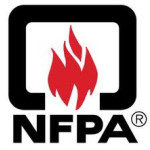- Industry: Fire safety
- Number of terms: 98780
- Number of blossaries: 0
- Company Profile:
Established in 1896, NFPA's mission is to reduce the worldwide burden of fire and other hazards on the quality of life by providing and advocating consensus codes and standards, research, training, and education.
Loose packing material (usually wood) protecting a ship’s cargo from damage or movement during transport.
Industry:Fire safety
Long tunnels or walkways connecting separate buildings or structures that are generally underground, without windows, and with limited entrances and exits.
Industry:Fire safety
Logs 8 ft (2. 4 m) or less in length customarily intended for pulpwood or fuel uses.
Industry:Fire safety
Locations protected from weather and not subject to saturation with water or other liquids but subject to moderate degrees of moisture. Examples of such locations include partially protected locations under canopies, marquees, roofed open porches, and like locations, and interior locations subject to moderate degrees of moisture, such as some basements, some barns, and some cold-storage warehouses.
Industry:Fire safety
Location of electric equipment that does not generate electricity but receives and converts or transforms generated energy to usable electric energy.
Industry:Fire safety
Locating a combustible particulate solid process in the open air or in a separate building.
Industry:Fire safety
Localization of an overcurrent condition to restrict outages to the circuit or equipment affected, accomplished by the choice of overcurrent protective devices and their ratings or settings.
Industry:Fire safety
Live loads are those loads produced by the use and occupancy of the building or other structure and do not include construction or environmental loads such as wind load, snow load, rain load, earthquake load, flood load, or dead load. Live loads on a roof are those produced (1) during maintenance by workers, equipment, and materials; and (2) during the life of the structure by movable objects such as planters and by people.
Industry:Fire safety
